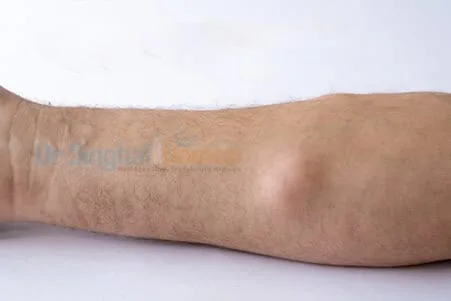Understanding the Importance of Physical Therapy for Children With SEND

Children with special needs must undergo physical therapy because the process can greatly turn their lives around. By having a one-on-one interaction with these children, physical therapists encourage and use exercises, stretches and other strategies that would foster the improvement in balance, mobility, hand-eye coordination, and speech in these children.
In this article, we will give you a closer look at physical therapy for children with special needs and how it’s an effective treatment method that ought to be embraced. This article explores the different ways in which physical therapy can be beneficial for these children.
Understanding the Importance of Physical Therapy
1. Holistic Approach to Development
Physical therapy considers all stages of development because a child’s physical well-being cannot be separated from the child’s mental, developmental, and social well-being. Therefore, when caring for the child, therapists help advance the child’s development in areas of physical concern.
Example: Muscle stiffness and limited motor coordination may be present in a child diagnosed with cerebral palsy. Physical therapy interventions are aimed at training the muscles and increasing joint mobility and practical abilities. As these barriers reduce, the child becomes more engaged and confident in social interactions.
2. Early Intervention Matters
When it comes to children with SEND (Special Educational Needs and Disabilities), it is important to take action at an early age. Ideally, the earlier the therapy is started the better the chances are of getting positive results. Families and other caregivers work closely with physical therapists to assess developmental milestones and provide the right care where necessary.
Example: A child of two years suffering from Down syndrome needs physical therapy and has a lot to gain. For instance, motor skills, balancing and strengthening activities are useful in the development of such pioneer skills as crawling, standing and walking.
3. Customized Treatment Plans
The needs of every child are different which is why a PT (Physical Therapist) comes up with individual plans to suit the child’s needs. They assess the strengths and weaknesses and identify the goals and destinations of the child based on certain factors such as age, diagnosis, and family expectations.
Example: A teenager with spina bifida may require a special program of exercise to build up those muscles which were not developed. The therapist then sets a plan with the teen and the family that involves activities the teen loves and things that the teen does regularly.
4. Promoting Independence
Physical therapy empowers children to gain independence in their daily activities. Therapists teach adaptive techniques and strategies for tasks such as dressing, feeding, and navigating their environment.
Example: A child with autism spectrum disorder learns sensory integration techniques during therapy sessions. These skills help them manage sensory sensitivities and improve their ability to participate in school and community activities.
5. Addressing Pain and Discomfort
Physical therapy can help children feel better when they are in pain because of musculoskeletal disorders or other postural problems. Pain is evaluated, and means of reducing or managing pain is instituted by the therapists.
Example: A child with juvenile idiopathic arthritis may struggle with joint pain. Therapists use gentle exercises, joint mobilizations, and pain-relief modalities to enhance comfort and mobility.
6. Enhancing Gross and Fine Motor Skills
Physical therapy focuses on developing both gross motor (large muscle groups) and fine motor (small muscle groups) skills, which are essential for daily tasks and recreational activities.
Example: A child with spastic diplegia, a form of cerebral palsy, works on balance, coordination, and hand-eye coordination through play-based exercises. Over time, they gain better control over their movements and can participate in sports or hobbies.
7. Collaboration with Families
Parents are known to have a significant influence on the child’s progress. Parents and caregivers are also given instruction on home exercises, positioning and use of devices by physical therapists.
Example: A child with muscular dystrophy benefits from regular stretching exercises. The therapist teaches the family how to incorporate these stretches into the child’s daily routine, ensuring consistency.
Physical therapy goes beyond exercises; it empowers children with special needs to reach their full potential. By enhancing physical abilities, therapists contribute to a brighter future for these remarkable individuals.
The Benefits of Physical Therapy for Individuals with Special Needs
Physical therapy is highly effective when it comes to improving the physical well-being of individuals with special needs and their quality of life in general. The therapy comprises a range of techniques and processes that focus on enhancing different aspects of motor abilities.
Through promoting greater independence in task accomplishment when treating the conditions, physical therapy not only improves physical functioning abilities but also improves daily living skills as well. Thus, it becomes an important part of the overall care management strategy.
Key Benefits of Physical Therapy for People with Special Needs:
1. Improved Motor Skills, Coordination, and Muscle Strength
These are programs that seek to improve such areas with development support besides addressing various challenges that come with some conditions.
2. Increased Independence in Daily Activities
As strength and coordination improve, individuals undergoing therapy often find they can perform everyday tasks with less assistance, leading to greater independence and autonomy.
3. Enhanced Balance and Flexibility
With the help of frequent therapy sessions, the patient maintains improved balance and flexibility and tends to avoid injuries and pains.
4. A Supportive and Encouraging Environment
Physical therapy also plays the role of offering interpersonal interactions and opportunities to engage with other people and improve their emotional health and self-esteem.
5. Personalized and Inclusive Approach
Physical therapy is highly personalized, it takes into account each person’s requirements and circumstances. This approach not only compliments the health of an individual physically but also in any other aspect of development and activities.
6. Preventative Care
Through physical therapy, patients would be able to minimize the effects of their condition that might lead to worsening of the condition or a chance for secondary complications to arise.
Get Help From a Physical Therapist
Each patient has unique needs, and a tailored approach to treatment is essential. An experienced physical therapist can provide this individualized care for a special needs child. A physical therapy session may include the following components:
-
Initial Assessment: Evaluating the child’s current abilities and identifying areas for improvement.
-
Regular Appointments: Developing mobility, motor skills, strength, and flexibility through consistent sessions.
-
Education: Teaching the patient and their family about various exercises and techniques.
-
Home Visits: Assessing the need for special equipment and providing guidance on its use.
A physical therapist will work directly with you and your family to set goals and determine the best treatment options for your special needs child.




